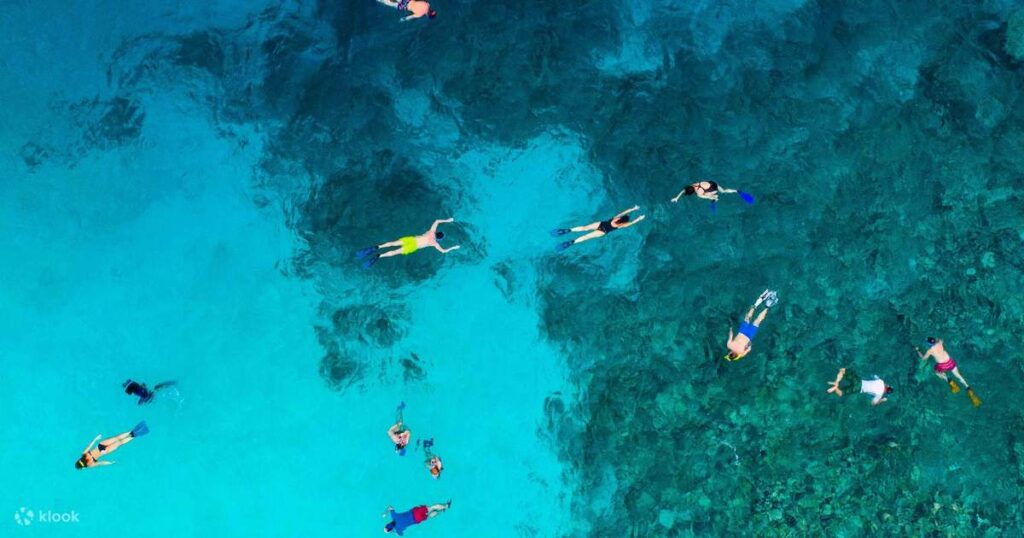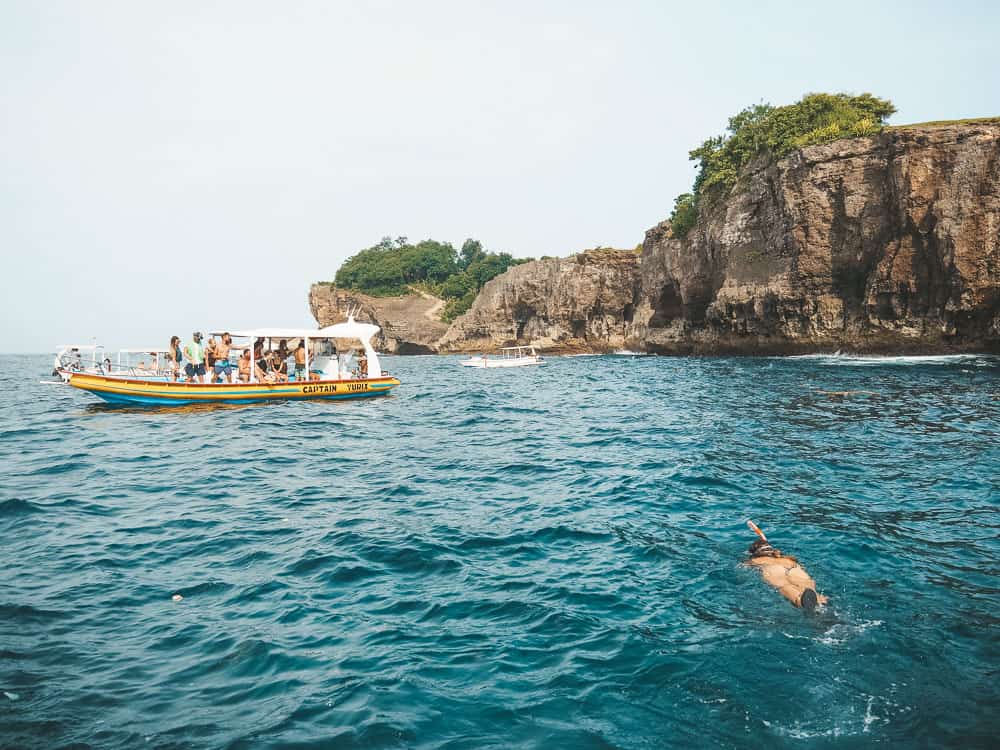Manta Point, nestled along the southwestern coast of Nusa Penida Island, stands out as one of the most renowned dive sites in the region. This location offers a remarkable opportunity for divers to encounter majestic manta rays almost year-round. Named after the community of manta rays that frequent the deep waters around the site, Manta Point is a must-visit destination for marine enthusiasts.

A Unique Diving Experience
The allure of Manta Point lies in its vibrant marine life and the chance to observe manta rays up close. These graceful giants are often seen gliding through the water, particularly around their “cleaning stations.” These are specific coral heads where manta rays gather to be cleaned by small reef fish, such as wrasses, which remove parasites and bacteria from their skin. The manta rays frequently visit these stations, creating a dynamic and fascinating underwater spectacle.
The dive typically starts at a sandbar, leading divers to the first of several cleaning stations. As the dive progresses, you’ll encounter a massive coral bump where manta rays are often seen performing their elegant, aerial-like maneuvers. Following this, divers usually traverse a vibrant coral plateau, reaching the second cleaning station, where the diversity of marine fauna at Manta Point becomes evident.
The excitement doesn’t end with manta rays. The area is also home to various other marine species including bamboo sharks, blue-spotted stingrays, and an array of smaller organisms like rare nudibranchs, Zanzibar shrimp, and porcelain crabs. Divers might even spot a stunning crown jellyfish, adding to the site’s allure. Manta Point is celebrated not only for its manta rays but also for its rich marine biodiversity.
Understanding Manta Ray Cleaning Stations
Cleaning stations are crucial for manta rays, as they provide a vital service for the mantas’ hygiene. The ecosystem here involves manta rays constantly circling around coral heads, allowing cleaner fish to perform their cleaning duties. During these interactions, mantas also consume plankton, which is abundant in these waters. This symbiotic relationship highlights the intricate balance within marine ecosystems.

Manta Rays: Unique and Intriguing
Manta rays can be identified by unique patterns on their bellies, akin to fingerprints in humans. Divers often use these patterns to distinguish individual rays. However, mantas may not always be present at Manta Point; they can migrate or gather in different locations for mating or due to changes in environmental conditions like water temperature or pollution. For a deep dive into the life of manta rays, exploring specialized articles and guides on their behavior and conservation is recommended.
Access and Conditions
Manta Point is situated about halfway along Nusa Penida’s southwestern coast. Access is typically by boat, with trips departing from Toyapakeh in Nusa Penida or Sanur in Bali, taking approximately 45 minutes. The journey itself offers picturesque views of Nusa Penida’s coastline, passing notable landmarks such as Angel’s Billabong and Kelingking Beach.
While snorkeling is possible, it is often more challenging due to the presence of multiple boats and snorkelers at popular spots like Manta Bay. For a more immersive experience, diving is preferred, especially for those new to the sport or seeking a quieter interaction with the mantas.
Dive Site Depth and Best Times
The site’s shallowest areas are about 8 meters deep, with the maximum depth around 12 meters, making it suitable for beginner and intermediate divers. However, there are deeper sections reaching up to 40 meters for those seeking more advanced dives.
Manta rays are generally present throughout the year, though their visibility can be affected by seasonal breeding cycles and environmental factors. For optimal conditions, it is advisable to dive with local operators who adjust their schedules to avoid peak times and ensure a better experience.
Conclusion
Manta Point is more than just a dive site; it is a gateway to experiencing one of the ocean’s most majestic creatures in their natural habitat. From the mesmerizing manta rays to the diverse marine life and stunning underwater landscapes, Manta Point offers an unforgettable diving adventure. Whether you are an experienced diver or a beginner eager to explore, Nusa Penida’s Manta Point promises a dive full of wonder and discovery.




